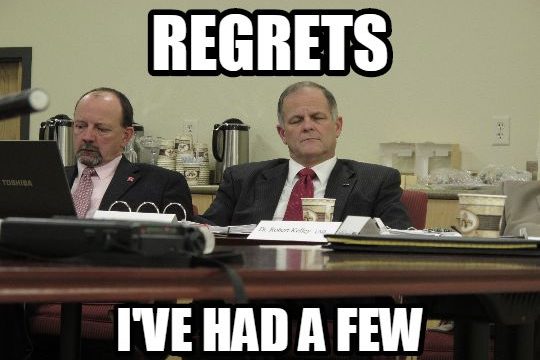State Board Of Higher Education Meeting Turns Into Nearly 5 Hour Hissy Fit

Yesterday the North Dakota House passed, by a wide margin, a budget for the university system which includes a more than $37 million increase in general fund appropriations and more than $95 million in one-time funding for building projects all for the 2015-2017 biennium.
That’s a pretty generous increase in the amount of tax dollars North Dakota citizens are laying out for the universities, coming as it does on top of a doubling of higher education spending over the last decade, but you couldn’t tell that from the way the university presidents reacted at a marathon State Board of Higher Education meeting.
It quickly turned into a sob fest so protracted that the board couldn’t complete its agenda. Vice Chancellor Linda Donlin sent out an email just before 7:00pm stating that the board was tabling the remainder of its agenda. The meeting had started at 2:00pm.
During their histrionics the university presidents accused the Legislature of politics, and one even claimed that faculty is having to take food subsidies according to this report from Forum reporter Anna Burleson:
“We had a funding formula,” North Dakota State College of Science President John Richman said at the meeting held in Bismarck. “I refuse to call what the House has given us a formula. It’s a political statement. We can discuss all day why, but it’s no longer a funding formula.” …
Williston State College President Raymond Nadolny said if the bill passed as is, he would have to cut faculty and staff, not sign on for a shared services agreement with UND, and completely eliminate two sports, among other things.
“The college is truly perplexed at what additional evidence is required to prove the fastest growing college in the state … is in need of support,” he said.
Valley City State University President Tisa Mason got emotional when she told the board that some of her employees have children using free and reduced lunch vouchers.
Richman complains about the lack of a formula, but the House didn’t break the formula at all, and his institution is getting a more than 9 percent boost in funding as a result of it. Valley City State, where some employees are supposedly getting food subsidies, got a 6 percent spending boost.
Here’s a graph showing what the House passed in funding for based funding in the 2015-2017 biennium compared to what the universities got for the current 2013-2015 biennium. You’ll notice that Dickinson State saw a decrease in funding, but that’s because of a drop in their completed credit hours (they’re still getting hit by the fallout from the diploma mill scandal). Williston State College also took a slight reduction because of the formula, but the rest of the universities saw increases, albeit not on the level of what Governor Jack Dalrymlpe proposed.
But remember, the state’s revenue forecast has been revised downward by more than $5 billion since he issued that budget:
The presidents are angry because the increases they’re receiving are smaller than what Governor Jack Dalrymple budgeted for (the executive budget called for a more than $144 million increase, which would be a 20 percent increase). They’re whining as though their budgets were cut by House lawmakers, but that’s not the case. They’re just not getting as big an increase as they expected. And why should they? After years of duplicitous dealings with lawmakers, and questionable (at best) spending practices, it may be time for them to lump it and prioritize their budgets.
Especially with the state grappling with revenue uncertainties due to oil declines. And keep in mind, it’s not like enrollment has been exploding at these universities. This chart from legislative council shows total legislative appropriations contrasted with enrollment growth. Notice that one of these lines is essentially flat:
And is the House sending a “political statement” to the universities?
Absolutely. One that’s long overdue. And it’s not just about money.
The bill also moved the university system’s lawyers and auditors out of the university system and into the Attorney General and State Auditor offices, respectively (which is something I posted about earlier). It requires that the university presidents undergo performance reviews (something the State Board of Higher Education has balked at). It has additional reporting requirements for the use of appropriated funds and scholarships. It even requires some consolidation of IT departments after a series of privacy breaches has rocked the university system.
In short, this isn’t just a budget. This is a budget and substantial reforms for the way the university system is monitored and governed.
I’m inclined to believe that the reaction at tonight’s SBHE meeting was an endorsement. Giving the university presidents what they want has led us down a path of waste, fraud, and mediocrity. It’s time for the grownups to step in.






